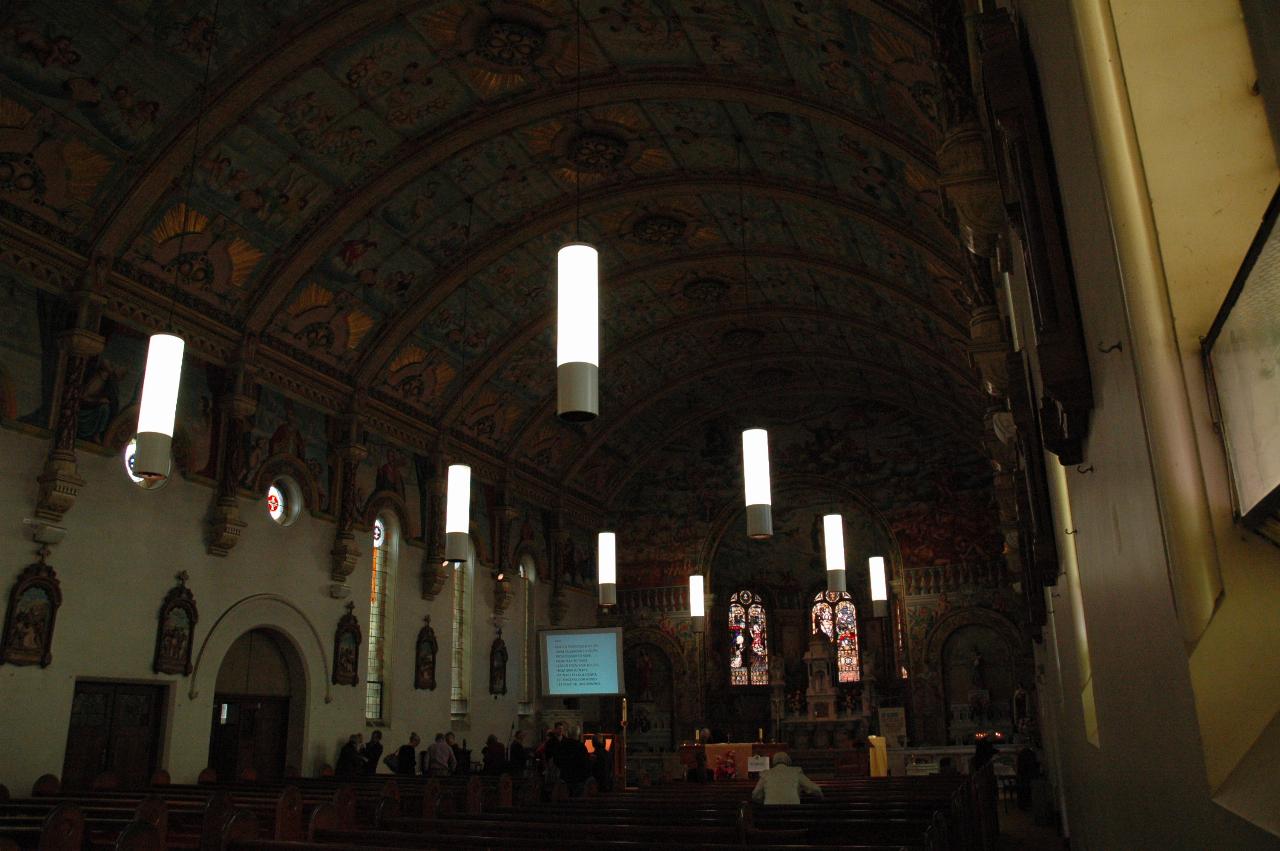
Note: these photos have been adjusted to improve their visibility. The wide range between the lights or windows and the interior of the church make it difficult to see much detail in the darker areas, so they have been brightened.
There is an article at the rear of the church explaining how this came about:
St Mary's Church is known all over Australia for its murals, painted between 1931 and 1938 by Italian migrant artist Francesco Floreani. The building of St. Mary's Church began in 1913, when most of the current building was built. The bell tower and entrance were completed in 1937.
The artist
Francesco Floreani was born near Venice, and studied painting at the Academy
of Arts, Turin. He came to Australia in 1927 as a young man. Work was
plentiful until the Great Depression of 1930, when large numbers of people
were forced to find work wherever it could be found. In 1931 he was picking
peas at Metung, when he met Fr Cremin, then parish priest of Bairnsdale.
He asked Fr Cremin if he knew of any better work offering. When Fr Cremin
learned that Francesco was an artist, he offered him a job of decorating the
interior of the church. Mr Floreani's skill was employed in places other
than Bairnsdale. He settled in Melbourne in 1938. He worked as a painter
on such famous buildings as the Regent Theatre, the Plaza Theatre and
State Theatre in Flinders St, with the fascinating effect of open blue sky
with twinkling stars. A talent for art was no ticket to prosperity, so
he also applied his painting skills to houses and even fences!
What did the artist look like? Francesco Floreani has depicted himself in the Crucifixion scene, half way down the eastern side of the church. He is depicted kneeling with his hands clasped, with a blue collar and cuffs.
The work
The work of painting in St Mary's Church was done in two stages - between
1931 and 1934, and again 1937 - 1938, more than 4 years of lying, kneeling,
bending and balancing on 15 meter high scaffolding.
The murals
Francesco Floreani was first given work painting several statues which were at
the foot of the main altar. Then began work in the sanctuary, around the
beautiful marble altar. Above the main altar is a painting of Mary Immaculate,
to whom the church is dedicated. There are "framed" paintings of the Nativity
and the Taking Down from the Cross on either side of the altar.
In front of the main altar are the vivid paintings representing Heaven, Hell and Purgatory.

The view from the back of the church. The amount of decoration is mind boggling! Easy to see where the 4 years work ended up.

The plain walls make for a nice contrast against the murals.
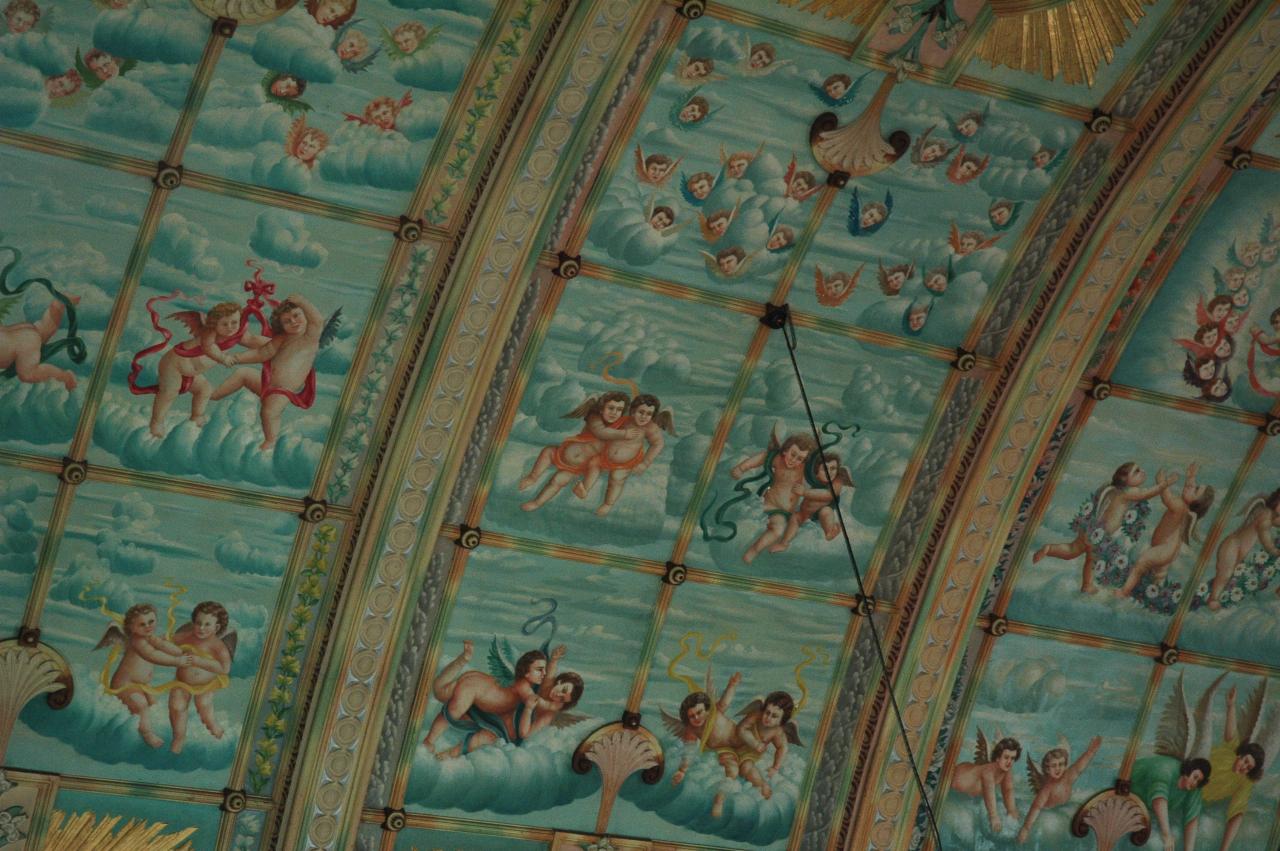
A small part of the ceiling. This strikes me as being very "Italian" in style, at least of the churches in Rome.

After the Second Vatican Council in 1963, changes to the Mass required the priest to face the congregation. Thus, the old marble altars at the far end of the church - visible here on the right - were augmented with a newer, simpler altar, as seen here.
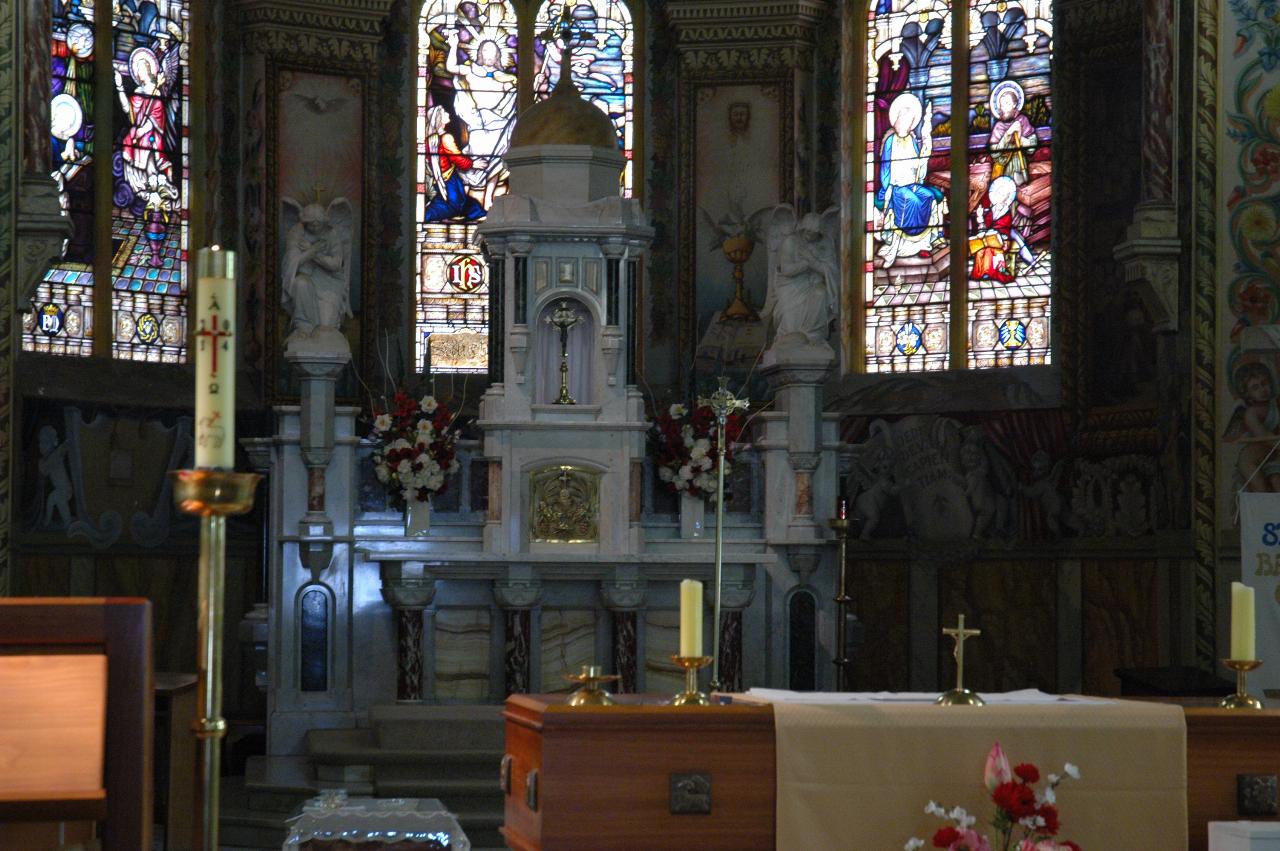
The old style altar in the rear contrasts with the new and simpler model. The artistry of the old altars is often quite beautiful.
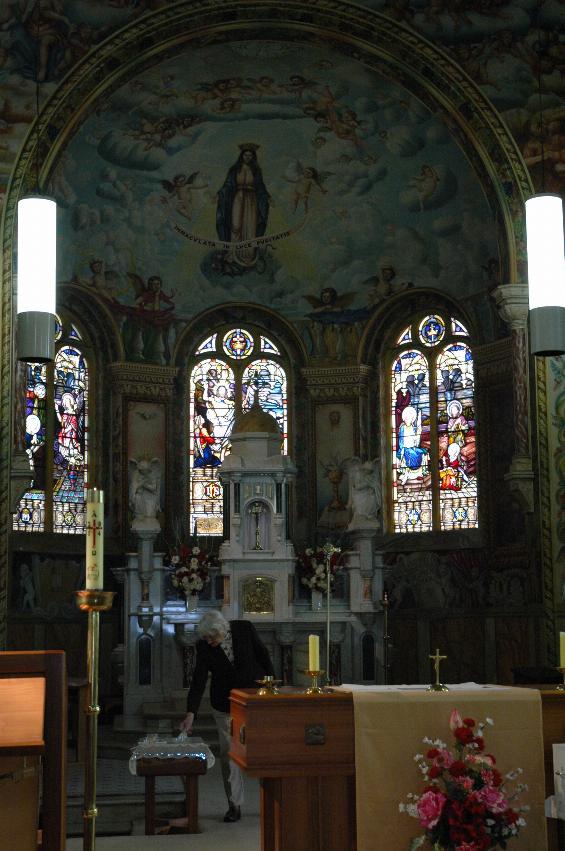
A repeat of the above, but in portrait mode, including the mural, featuring Mary Immaculate.
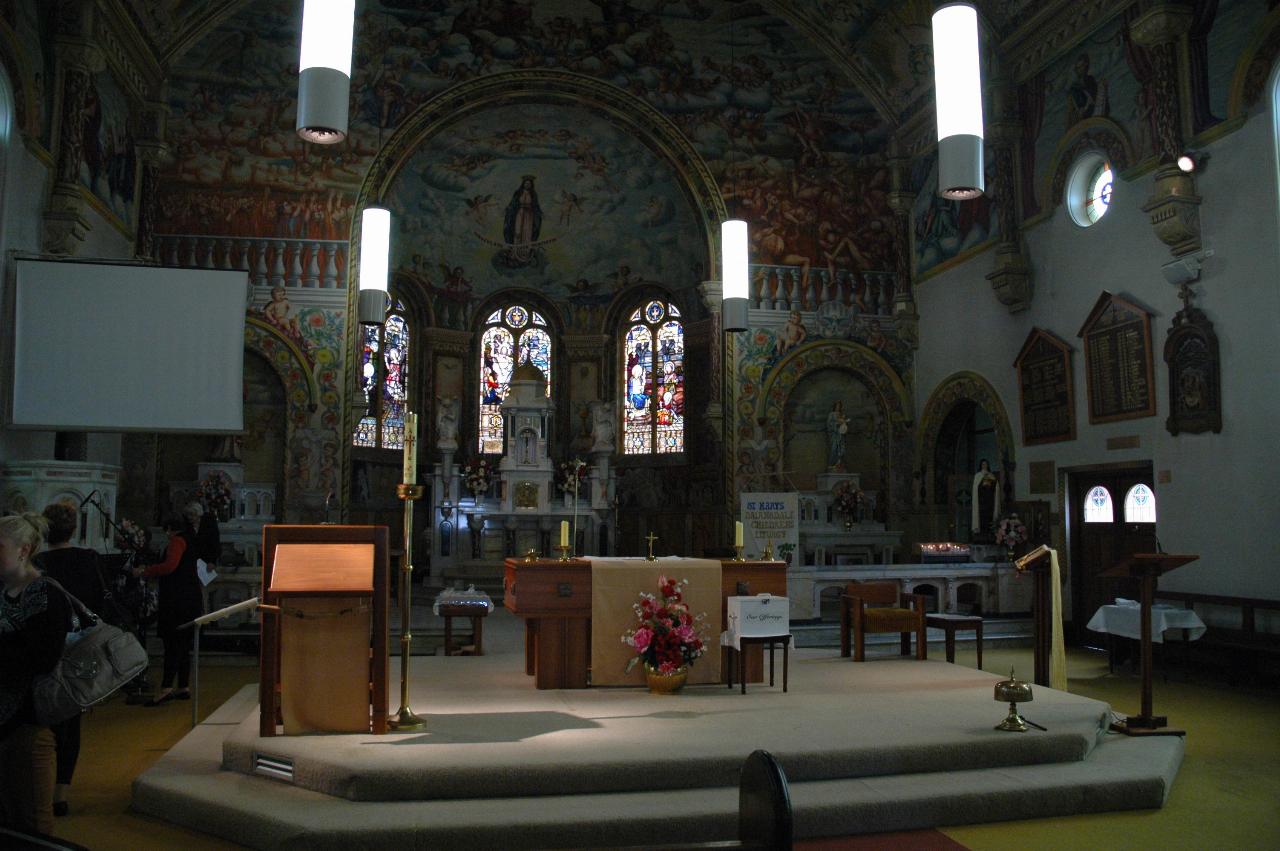
Just a wider view of the front of the church, including most of the murals.
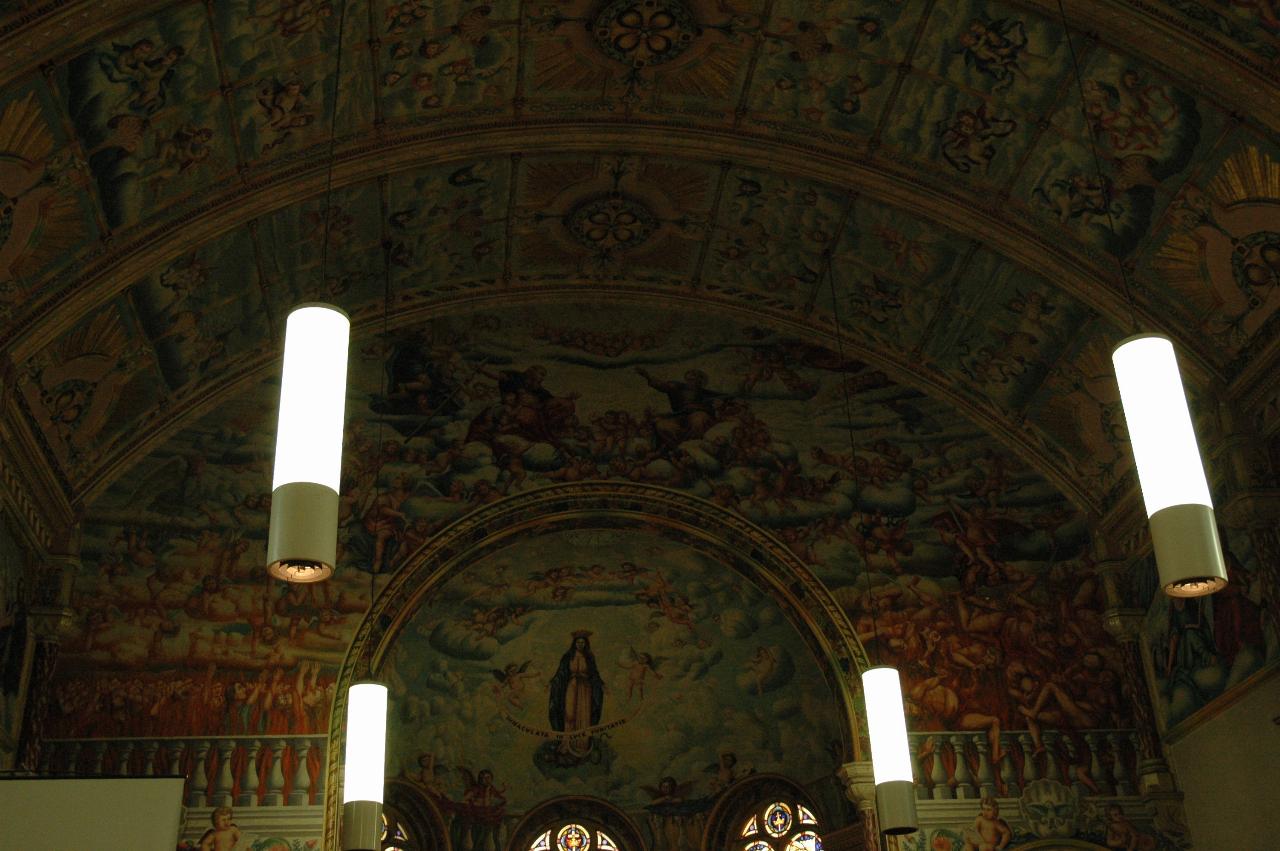
The front of the church at higher elevations. It's clear where the four years of work ended up.
From here, it was head east along the Princes Highway to Cann River, then left towards Bombala, Cooma and on to Canberra for the night. Quite a bit of the road from Cann River to Bombala was in forest country, the most dense forest of the journey. It was a pleasant drive, with not all that much traffic.
Being the last night on the road, and feeling lazy, dinner was in the hotel's dining area. Tomorrow's plan was to snap the photos around Canberra, the locations of which were determined over the last year or so, then heading back to Sydney.